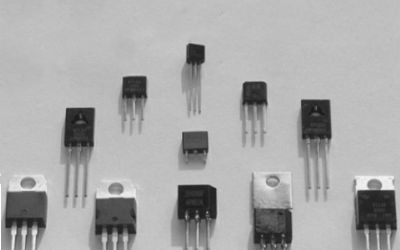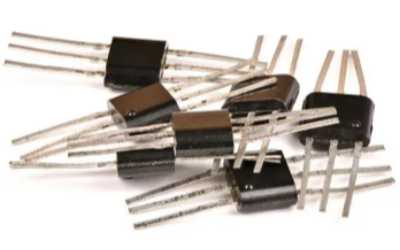What is the difference between a bidirectional thyristor and a single-phase thyristor?
Today, with the rapid development of power electronics technology, thyristors, the core power semiconductor device, have an increasingly wide range of applications. Among many types of thyristors, bidirectional thyristors and single-phase thyristors are the two most common ones. So, what are the differences and connections between the two? This article will explain it to you in detail.

The definition and working principle of bidirectional thyristor and single-phase thyristor
1. Definition and working principle of unidirectional thyristor
A unidirectional thyristor is a P-N-P type semiconductor device with a current that can only flow from the anode to the cathode. It consists of a P-type semiconductor, an N-type semiconductor, and a P-N junction. A trigger pulse is applied between the control electrode and the gate electrode. When the anode voltage is higher than the cathode voltage, the thyristor conducts.
2. Definition and working principle of bidirectional thyristor
A triac is a particular P-N-P-N type semiconductor device with two independent anodes and cathodes, and current can flow in both forward and reverse directions. The structure of a bidirectional thyristor is equivalent to a combination of two unidirectional thyristors. Its triggering method is similar to that of a unidirectional thyristor, but the trigger pulse of the control electrode can be triggered in both forward and reverse directions.
The difference between bidirectional thyristor and single-phase thyristor
1. Conducting direction: A unidirectional thyristor can only conduct in the forward movement, while a bidirectional thyristor can conduct in both the forward and reverse directions. This feature makes bidirectional thyristors more widely used in AC power supplies.
2. Control method: The unidirectional thyristor needs to apply a trigger pulse between the control electrode and the gate electrode to activate its conduction. Bidirectional thyristors can be activated by current, voltage, or high-frequency pulse signals, and the control method is more flexible.
3. Application scenarios: Unidirectional thyristors are usually used in switching circuits, power control circuits, and other fields in DC power supplies. Bidirectional thyristors are typically used in power electronic devices in AC power supplies, such as AC modulators, voltage controllers, timers, and other equipment.
4. Circuit design: In circuit design, a bidirectional thyristor can be regarded as a combination of two unidirectional thyristors, with a control electrode at each end to control the conduction of forward and reverse currents, respectively. Therefore, using bidirectional thyristors can simplify circuit design and reduce the number of components.

The connection between bidirectional thyristor and single-phase thyristor
Although there are significant differences in structure and function between bidirectional thyristors and monophasic thyristors, they are still related in some ways. For example, a bidirectional thyristor can be regarded as a combination of two unidirectional thyristors, with a control electrode at each end to control the conduction of forward and reverse currents, respectively. In addition, the triggering principles of bidirectional thyristors and unidirectional thyristors are similar, and both require a trigger pulse to be applied between the control electrode and the gate electrode.
Summary and comparative analysis
To sum up, there are significant differences between bidirectional and single-phase thyristors regarding conduction direction, control method, and application scenarios. The advantage of a bidirectional thyristor is that it can conduct in both forward and reverse trends and is suitable for AC power supply applications, while the edge of a unidirectional thyristor is that it has a simple structure and a precise triggering method and is ideal for DC power supply applications. When choosing which thyristor type to use, trade-offs are based on specific application requirements.
Bidirectional and single-phase thyristors are the core of power electronic devices and play a decisive role in various electronic equipment. Understanding and mastering the differences and connections between these two types of thyristors will help us select and use them more rationally in electronic design.
Supplier
With the continuous development of power electronics technology, thyristors, as core semiconductor devices, play an increasingly important role in various electronic devices. To meet customers' needs for high-quality and highly reliable thyristors, as a professional thyristor supplier, We are committed to providing you with high-quality products and comprehensive solutions.
Our thyristors use advanced production processes and high-quality materials to ensure that they can maintain stable performance under extreme environments such as high temperature, high voltage, and high current. We not only provide high-quality thyristors but also have muscular technical strength and rich industry experience to provide customers with comprehensive solutions. From product selection to application guidance, from technical support to after-sales service, we always adhere to the customer-centered approach and provide you with a full range of services.
If you have any questions or need further assistance with our thyristors or services, please get in touch with us. We look forward to cooperating with you to promote the project's success!
